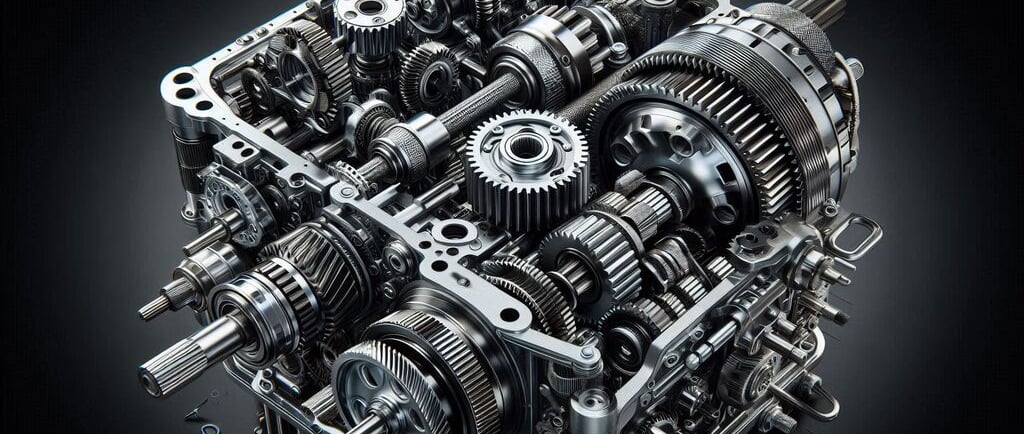Gearbox: Contains gears and other internal components for speed and torque adjustments.
If you’ve ever wondered how machines and vehicles adjust speed and torque efficiently, the answer often lies in the gearbox.
TRANSMISSION COMPONENTS
11/12/20243 min read


Understanding Gearboxes: Key Components and Functions for Speed and Torque Adjustments
If you’ve ever wondered how machines and vehicles adjust speed and torque efficiently, the answer often lies in the gearbox. Gearboxes play a critical role in the operation of everything from automobiles to industrial machines. But what exactly is a gearbox, and how does it help in adjusting speed and torque? Let’s dive into the world of gearboxes and break down their components, functions, and importance.
What is a Gearbox?
A gearbox is a mechanical device used to adjust the speed and torque of a machine or vehicle. It contains gears and other internal components that work together to convert power from the engine into usable mechanical energy. By adjusting the relationship between input and output speed, a gearbox allows machines to function more efficiently and perform specific tasks.
Essentially, the gearbox is the "translator" between the power produced by the engine and the wheels, conveyor belts, or other moving parts that require precise control of speed and force.
Types of Gearboxes
There are several types of gearboxes, each serving different purposes. These include:
Manual Gearboxes: Common in cars, these require the driver to change gears manually using a clutch and gear stick.
Automatic Gearboxes: These adjust gears automatically based on speed and load without the need for manual input.
CVT (Continuously Variable Transmission): A type of automatic gearbox that provides a seamless range of gears, adjusting continuously rather than in fixed steps.
Planetary Gearboxes: Often used in machinery, these offer high torque output with compact design.
How Do Gearboxes Adjust Speed and Torque?
The primary function of a gearbox is to adjust the speed and torque delivered from a power source to an output. This is achieved through the gears inside the gearbox.
The Role of Gears in Speed and Torque Adjustment
Gears are the core components within a gearbox. Their teeth mesh together, transferring power from one gear to another. The size of the gears and the number of teeth they have determines the torque and speed produced. Here's how it works:
Speed Adjustment: When a smaller gear (input gear) drives a larger gear (output gear), the output gear turns more slowly, reducing the speed but increasing the torque. Conversely, a larger input gear driving a smaller output gear increases the speed but decreases the torque.
Torque Adjustment: Torque is the force that causes rotation. Gearboxes are designed to either increase or decrease the torque based on the needs of the machinery. For example, in vehicles, a gearbox ensures that the engine delivers enough torque to accelerate, while also managing speed for smooth cruising.
Key Components of a Gearbox
While gears are the main components, gearboxes also contain other internal parts that contribute to their smooth operation:
Bearings: Reduce friction and help gears rotate smoothly.
Shafts: Transfer rotational power between gears.
Clutches (in manual gearboxes): Allow for smooth shifting between gears.
Lubrication: Keeps the gears and bearings functioning properly by reducing wear and tear.
Why Gearboxes are Essential in Everyday Machines
From cars to industrial machinery, gearboxes are crucial in optimizing performance. Here are a few examples of where and how gearboxes make a significant difference:
Automobiles: In cars, gearboxes allow the engine to operate efficiently at various speeds. When accelerating, the gearbox helps by increasing torque; when cruising, it adjusts to maintain optimal speed.
Industrial Machines: In manufacturing plants, gearboxes control the speed of conveyor belts, robotics, and other automated systems, ensuring tasks are completed accurately and efficiently.
Wind Turbines: Gearboxes in wind turbines convert the low-speed rotational energy from the blades into high-speed rotational energy that drives the generator.
Power Tools: Gearboxes adjust the power output in tools like drills and saws, providing the right amount of speed and torque for various tasks.
Benefits of Using Gearboxes in Various Applications
Improved Efficiency: By adjusting speed and torque, gearboxes allow machines to work more efficiently, reducing energy consumption and wear.
Versatility: Gearboxes can be tailored for specific tasks, making them suitable for a wide range of industries, from automotive to manufacturing.
Cost-Effective: Instead of designing multiple machines for different tasks, a single machine with an adaptable gearbox can handle various operations, saving on production costs.
Enhanced Performance: Gearboxes allow machines to perform tasks that would otherwise be impossible or less effective without speed and torque adjustments.
Choosing the Right Gearbox for Your Needs
When selecting a gearbox, several factors should be considered to ensure it meets your operational requirements:
1. Load Requirements
Understand how much torque your system needs to operate efficiently. This will help in choosing the correct gear ratio.
2. Speed Requirements
Determine the desired speed and the type of gear system required for smooth operation.
3. Size and Space Constraints
Consider the physical size of the gearbox, especially if space is limited in your machinery or vehicle.
4. Maintenance and Durability
Look for gearboxes that are easy to maintain and built for long-term use, particularly in harsh environments.
Conclusion: Gearboxes Are Essential for Speed and Torque Control
Gearboxes are indispensable components in machines and vehicles that rely on speed and torque adjustments. By understanding their key components, how they work, and the types of gearboxes available, you can ensure your machinery operates efficiently and effectively.



